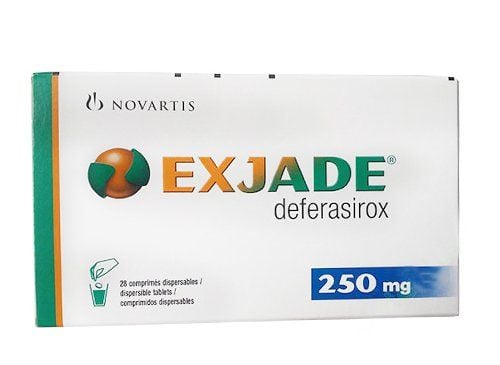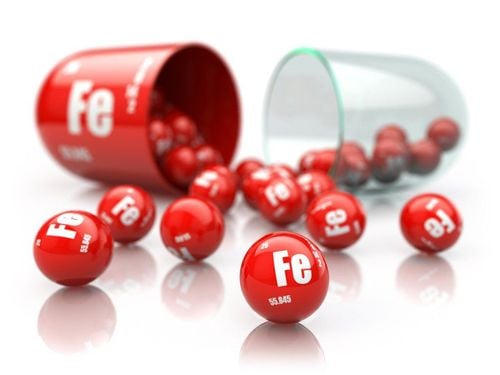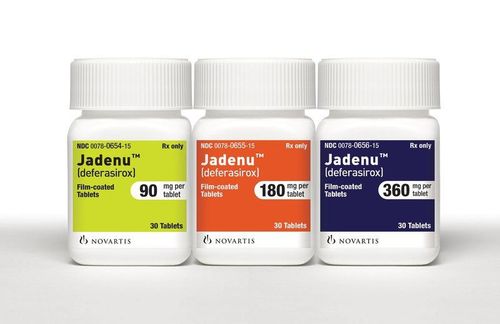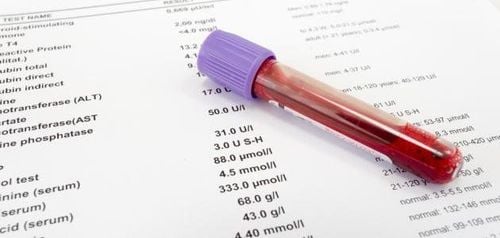This is an automatically translated article.
Iron is a substance that transports oxygen to tissues in the human body and participates in the reverse transport of carbon dioxide from tissues to the lungs. Iron metabolism disorder is an inherited disease with a disorder in iron levels in the body, affecting organs in the body such as the liver, joints, pancreas and heart.1. Basic features of iron metabolism in the body
Iron plays an important role in the body that is synthesizing hemoglobin, which is responsible for transporting oxygen to tissues and cells in the body. Iron is also a component of a number of redox enzymes in cells and is present in the respiratory pigment of muscles, myoglobin.About two-thirds of the iron in the body is in hemoglobin. 30% of iron is stored in ferritin and hemosiderin in the endothelial system in the liver, spleen, and bone marrow. Small amounts of iron are found in enzymes such as cytochrome, catalase, and peroxidase. Therefore, when iron metabolism disorders occur, the synthesis of hemoglobin and the amount of iron in the cell's enzymes will be affected. Iron is absorbed by the body from food, and then transported throughout the body by a protein produced by the liver called transferrin. If our body does not get enough iron through diet, blood iron levels will decrease and iron stores in tissues will be used, resulting in a decrease in iron stores in the body. iron deficiency in the body. Another disorder of iron metabolism is increased absorption of iron that increases iron stores and affects organs such as the liver, heart, and pancreas.
2. Iron metabolism disorder

Trẻ có thể bị thiếu sắt do khẩu phần ăn không cung cấp đủ hàm lượng sắt cho cơ thể
2.1 Anemia 2.1.1. Causes of iron deficiency Iron deficiency in the body is caused by the following reasons:
The diet does not provide enough iron for the body, namely lack of animal foods, lack of breast milk for iron metabolism disorders in children. Reduced iron absorption due to gastric bypass surgery, malabsorption syndrome, diarrhea, coliac. Blood loss due to hookworm, prolonged menstruation for women, gastrointestinal bleeding, hemorrhoids, uterine fibroids. Increased iron stores in macrophages and inflammatory cells due to chronic inflammatory diseases. Increased iron requirements for the following subjects: Pregnant and lactating women. Children born prematurely, children from 5 to 12 months old, children in the developing age, especially girls in puberty. 2.1.2. Expression of iron deficiency Iron deficiency manifestations have many different levels, including:
Iron deficiency reduces the amount of iron stored in the body. Microcytic hypochromic anemia is caused by iron deficiency. Disorders of cellular functions due to deficiency of iron-containing enzymes such as the anti-infective function by the enzyme myeloperoxidase in white blood cells, or inflammation of the lining of the esophagus and tongue due to the lack of redox enzymes in the cells.
2.2 Iron overload 2.2.1. Causes of iron overload Iron overload is often caused by prolonged blood transfusion, causing a large amount of iron to enter the body but not be eliminated in time, resulting in iron accumulation in the parenchyma of the organs. In addition, the cause of increased ferritin is also due to mutations in the gene that controls the amount of iron absorbed from food.
2.2.2. Expression of iron overload Iron overload damages the function of the liver and endocrine glands, causing diseases such as growth retardation, diabetes, and hypothyroidism. In addition, iron overload also affects the heart muscle causing heart failure and arrhythmia.
Clinically, usually if 50 units of blood are transfused into the body without chelation treatment, the above pathological manifestations will appear.
3. Tests to evaluate iron metabolism disorders
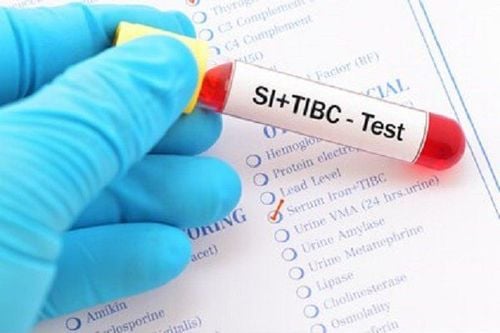
Xét nghiệm sắt toàn phần (TIBC)
To evaluate the disorder of iron metabolism in the body, it is necessary to do tests including blood iron index, iron transport capacity of the blood, the amount of iron stored in tissues. More specifically, the tests and their role in the evaluation of iron metabolism disorders such as iron deficiency or iron overload in humans are as follows:
3.1 Serum Iron A test that shows iron levels in blood
3.2 Total iron-binding capacity (TIBC) This is a test that shows iron-binding proteins in the blood, including transferrin which is a major iron-binding protein. Transferrin also shows a relationship with the body's iron requirements, that is, when the body's iron stores are low, transferrin will increase and vice versa.
3.3 Unsaturated Iron Binding Capacity (UIBC) The test represents transferrin redundancy and also shows transferrin levels.
UIBC = TIBC – serum iron.
3.4 Transferrin saturation % Expresses the percentage of transferrin that is saturated with iron.
3.5 Serum Ferritin Ferritin is the major iron storage protein in human cells. The serum ferritin test is used to measure the amount of iron stored in the body.
3.6 Transferrin receptor (TfR) Transferrin receptor (TfR) is a transferrin transport protein, including 2 types, TfR 1 and TfR 2 with the nature of transmembrane glycoproteins that keep the function of iron transport into cells and function under regulation by intracellular iron concentration. TfR is elevated in iron-deficient individuals, where it is considered one of the iron-deficiency anemia tests that distinguish it from chronic anemia or inflammatory anemia.
3.7 Other causes Other tests to evaluate for iron metabolism disorders are:
Hemoglobin, Hematocrit, mean MCV erythrocyte volume, mean MCH erythrocyte count in the complete blood count.
Reticulocyte count: usually decreases in iron deficiency and rises above normal during iron therapy.
Zinc- Protoporphyrin (ZPP)
HFE gene test
4. Indication of iron metabolism test

Người bị thiếu sắt thường có biểu hiện mệt mỏi kéo dài, chóng mặt
Iron metabolism tests are indicated alone or in combination when the following symptoms are present:
Fatigue, prolonged fatigue, dizziness. Asthenia. Headache. Pale skin and mucous membranes. Ferritin, transferrin saturation, TIBC, UIBC are indicated when chronic iron overload is suspected.
The HFE gene mutation test is indicated for the definitive diagnosis of chronic iron overload.
Serum iron and possibly ferritin and TIBC are indicated when the patient is thought to have iron overload or poisoning, with clinical symptoms including:
Joint pain Fatigue, asthenia. Stomachache. Loss of sexual desire. Cardiovascular abnormalities. For disorders of iron metabolism in children, when it is suspected that the child has ingested too much iron, a serum iron test is ordered to evaluate the degree of iron poisoning.
When the patient has signs of suspected iron metabolism disorder, it is necessary to do evaluation tests including iron indicators and related indicators. Thereby, it is possible to properly assess the status of iron metabolism disorders in patients and find out the cause as well as appropriate treatment measures.
Please dial HOTLINE for more information or register for an appointment HERE. Download MyVinmec app to make appointments faster and to manage your bookings easily.




